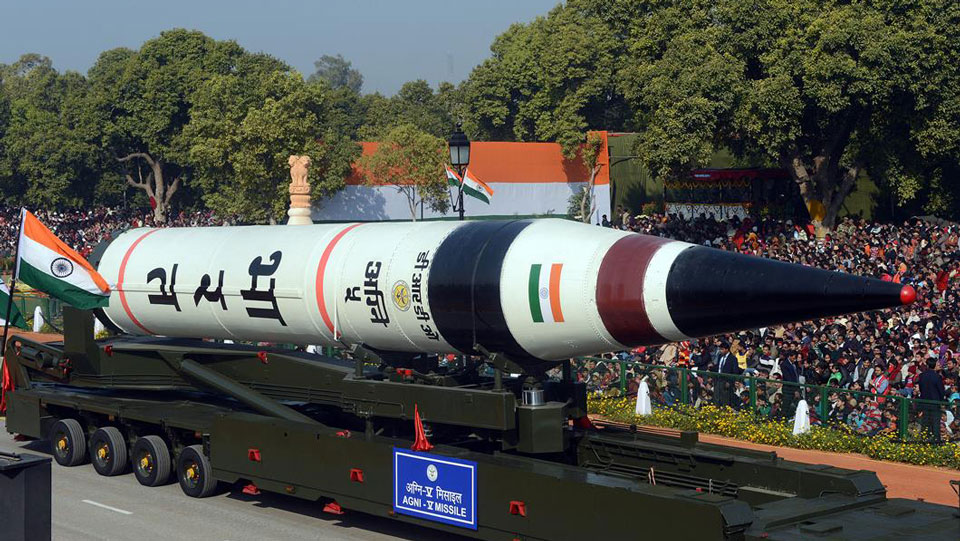Baby Chakraborty, KalimNews, Kolkata, July 17, 2025 : In a carefully timed and strategically significant move, India has sent a powerful message to China amid ongoing diplomatic engagement, by successfully test-firing its advanced Akash Prime surface-to-air missile system at an altitude of 15,000 feet. This high-stakes demonstration of military capability came even as External Affairs Minister S. Jaishankar was in China attending the Shanghai Cooperation Organisation (SCO) Foreign Ministers’ Meeting—highlighting India’s nuanced diplomatic and defense strategy.
The test, whose precise location remains undisclosed but is understood to be somewhere within the strategically vital Ladakh sector, has caught the attention of regional and international observers. Given its proximity to the Line of Actual Control (LAC), the de facto border between India and China, the timing and location of the test appear deliberate. The launch underscores India’s readiness to defend its borders with technological precision while simultaneously engaging in high-level diplomacy.
India’s defense authorities have confirmed that the Akash Prime air defense system, a significantly enhanced version of the existing Akash system, successfully neutralized two fast-moving aerial targets. This new variant is designed for deployment in high-altitude and extremely cold environments, capabilities that are essential for defending the nation’s northern frontiers. The missile trial marks a significant evolution in India’s air defense capabilities and reflects continued focus on self-reliance and technological superiority in the defense sector.
The Indian Army and Air Force already operate multiple regiments of the original Akash Air Defense System, which proved its mettle during Operation Sindoor—India’s successful response to Pakistani incursions involving Chinese aircraft and Turkish drones. In that operation, the Akash system played a key role by accurately intercepting incoming threats. The Akash Prime, with its upgraded targeting system, extended operational range, and improved all-weather performance, is now set to bolster India’s defense posture further with the addition of third and fourth regiments.
Described metaphorically by officials as the “grandfather” to the Akash system’s “brother”, the Akash Prime showcases a generational leap in India’s air defense technology. It can engage aerial threats with enhanced precision under the harshest of conditions—significantly improving India’s combat readiness along contested borders.
This show of strength comes at a crucial juncture in India-China relations, which remain complex and occasionally tense. Despite diplomatic overtures and multilateral engagements, including the ongoing SCO Summit, India has consistently asserted its strategic autonomy and defense preparedness.
The visit of Foreign Minister S. Jaishankar to China, where he met his counterpart Wang Yi on the sidelines of the SCO Summit in Astana, Kazakhstan, further underscores the delicate balancing act India maintains. The SCO, established in 2001, has evolved into a key multilateral forum where India interacts with Central Asian nations, China, and Russia. It serves as a platform to address shared concerns such as terrorism, regional security, economic cooperation, and cultural exchange.
India’s increasing engagement with the SCO reflects its recalibrated geopolitical priorities. While ASEAN remains central to India’s Act East Policy, the SCO presents a direct channel to collaborate with energy-rich and strategically located Central Asian nations. At the same time, it offers a neutral platform for engagement with China and Pakistan—both fellow SCO members—despite lingering tensions on multiple fronts.
India’s actions—testing a major defense capability while attending a major diplomatic event in China—send a dual message. On one hand, India remains committed to diplomacy and regional cooperation. On the other, it is equally prepared to defend its sovereignty with cutting-edge indigenous defense systems. This dual approach illustrates India’s evolving strategy of maintaining a firm defense posture while advancing its global diplomatic footprint in a rapidly shifting geopolitical landscape.
As the region navigates an increasingly complex security environment, India’s strategic messaging through synchronized military preparedness and diplomatic engagement highlights its resolve to play a decisive and independent role on the global stage.

